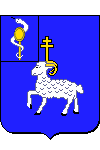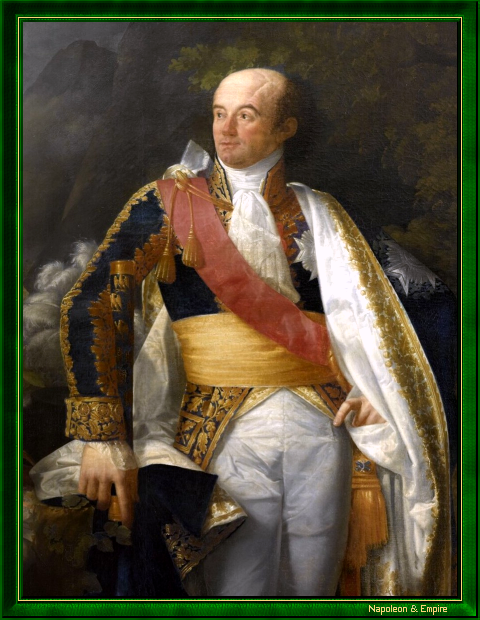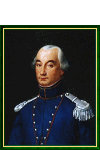Count of the Empire
Pronunciation:

Catherine-Dominique de Pérignon was born in Grenade, near Toulouse, on May 31, 1754.
Seeing his lack of connections and mediocre titles of nobility block his advancement, he abandoned the military career in the years preceding the French Revolution.
Elected Justice of the Peace in 1789, he became popular for the accuracy and conscientiousness with which he carried out his duties. In 1791, the voters of Haute-Garonne made him a member of the Legislative Assembly.
He resigned as soon as war was declared, and returned to service as a lieutenant-colonel in the Pyrenean army. Brigadier general in September 1793, division general two months later, he scored numerous successes against the Spanish: capture of the Boulou camp (March 1, 1794), victory at La Junquera (June 7) and replacement of Jacques Dugommier at the head of the army after the latter's death (November 18, 1794). Once again victorious at the Montagne Noire (November 17-20, 1794), he ended the war victoriously.
After the Peace of Basle, Pérignon was elected deputy to the Conseil des Cinq-Cents and appointed ambassador to Spain. He succeeded in signing the Treaty of Saint-Ildefonse with Spain (August 19, 1796), despite the presence in Madrid of an ambassador from the "King of France". Recalled in January 1798 due to embezzlement under his authority and an affair of the heart with a royalist spy, he was left without a posting until October, when he, a former general-in-chief, was sent to command two divisions in the Army of Italy.
He took up his post in May 1799, and a few months later, at Novi (August 15), was taken prisoner with all his generals.
Returning to France in September 1800, after more than a year in captivity, Pérignon was appointed senator by the First Consul Napoleon Bonaparte, who refrained from giving him a command.
In 1804, he showed himself to be a fervent supporter of the advent of the Empire, and did not hesitate to proclaim it with greatiloquence, which earned him the "title" of Marshal - a subtle distinction that the Emperor drew in the decree of 29 Floréal Year XII between the fourteen generals appointed Marshals of the Empire and the four senators who had commanded in chief and to whom only the title was given, namely Pérignon himself, Kellermann, Lefebvre and Sérurier.
Governor of Parma and Piacenza in 1806, Governor of Naples and Count of the Empire in 1808, Pérignon returned to Paris in 1814 after Joachim Murat's alliance with Austria, which he bitterly reproached to the King of Naples and his wife Caroline Bonaparte. Left without a job, he withdrew to his native region and rallied to King Louis XVIII as soon as the latter arrived.
During the Hundred Days, the royalists tried to use him to win over the people of Toulouse to the Bourbon cause. But no one took this old man of declining intelligence seriously. Napoleon I simply struck him off the list of marshals and let him go home without a care in the world.
After the battle of Waterloo, Pérignon regained his marshal's baton by the grace of King Louis XVIII, who also made him Governor of Paris and Marquis.
A member of the Chamber of Peers called to judge Marshal Ney, he voted for his death.
Catherine-Dominique de Pérignon died in her Parisian hotel in Le Marais on Christmas Day 1818, and is buried in the Père-Lachaise cemetery (24th division).
"Marshal Pérignon" by Philippe Auguste Hennequin (Lyon 1763 - Leuze, Belgium 1833).

Pérignon's name is inscribed on the 33rd column (west pillar) of the Arc de Triomphe de l'Étoile .
Freemasonry: Marshal Pérignon was appointed Grand Officer of Honor of the Grand Orient of France in 1806, and then became in 1813 an honorary member of the Supreme Council of the 33rd for the Kingdom of Naples.Detailed military career
established by Mr. Eric Le Maître, put online with his kind permission.Combat wounds
A bayonet thrust to the thigh at Peyrestortes, September 17, 1793Saber blows to the head and arm at Novi, Italy, August 15, 1799.
Captivity
Captured due to his wounds at Novi on August 15, 1799. He returned to France in June 1800.First engagement
To the garrison battalion of the Lyonnais regiment, July 6, 1780.Career development
Second lieutenant, July 6, 1780.Lieutenant-colonel, July 1789.
Lieutenant-colonel, September 16, 1792.
Brigade commander, July 28, 1793.
Brigadier General, September 18, 1793.
Major General, December 7, 1793.
Marshal of the Empire, May 19, 1804.
Service record
To the Royal Grenadiers of Quercy, August 18, 1782.National Guard, Montech, Haute-Garonne, July 1789.
Montech canton justice of the peace, 1790.
Discharged with the provincial troops under the law of March 20, 1797.
Elected deputy for Haute-Garonne, September 5, 1791.
Member of the Military Committee, October 26, 1791.
Resigned as deputy in May 1792.
With the Pyrenees legion, September 16, 1792.
With the Pyrénées-Orientales army, from 1792 to 1795.
Commanded the Central Division on January 13, 1794, which became the 2nd Division on August 6, 1794.
Appointed commander-in-chief of the Pyrénées-Orientales army, November 18, 1794.
Ceased his duties on May 29, 1795.
Commander-in-chief of the Brest coastal army, September 15, 1795.
Elected deputy for Haute-Garonne to the Conseil des Cinq-Cents, October 16, 1795.
Commander-in-chief of the combined armies of the Brest and Cherbourg coasts, November 13, 1795.
Did not attend, having been appointed ambassador to Spain, November 26, 1795.
Ceased his diplomatic functions on December 21, 1797.
Admitted to the reform salary, August 24, 1798.
Employed in the Army of Italy, October 14, 1798.
Commanded troops stationed in Liguria, May 1799.
Commanded the left corps of the Army of Italy, August 1799.
Prisoner at Novi, returned to France in June 1800.
Commander of the 10th military division in Toulouse, January 5, 1801.
Senator, April 12, 1801.
Retired on November 18, 1801.
Extraordinary Commissioner to settle the borders between France and Spain, September 11, 1802.
Vice-President of the Senate, October 27, 1802.
Holder of the Bordeaux senatorial seat, September 28, 1803.
Governor General of the States of Parma and Piacenza, September 18, 1806.
Governor of Naples, commanding the French army stationed in the kingdom under Murat and in place of Jourdan, July 23, 1808.
Discharged on March 27, 1813.
Commissaire extraordinaire du roi dans le 1ère division militaire, April 22, 1814.
Chairman of the commission responsible for examining the titles of former officers, May 31, 1814.
Peer of France, June 4, 1814.
Resigned from the commission, October 10, 1814.
Provisional governor of the 10th military division in Toulouse, March 28, 1815.
Ceased his functions, April 4, 1815.
Struck off the list of marshals, April 10, 1815.
Reinstated as governor of the 10th military division, July 24, 1815.
Governor of the 1st military division, January 10, 1816.
Awarded the baton of Marshal of France by Louis XVIII and sworn in as such, July 14, 1816.
Marquis, August 31, 1817.
Address
10, Rue de Berry, Marais. Paris IIIème arrondissement
The Imperial almanac of 1811 indicates that Marshal Pérignon lived at this address (now 24, Rue Charlot). He died there in 1818.98
Other portraits

Enlarge
"Dominique Catherine Pérignon in 1792" painted in 1835 by Louis-Félix Amiel (Castelnaudary 1802 - Joinville le Pont 1864).